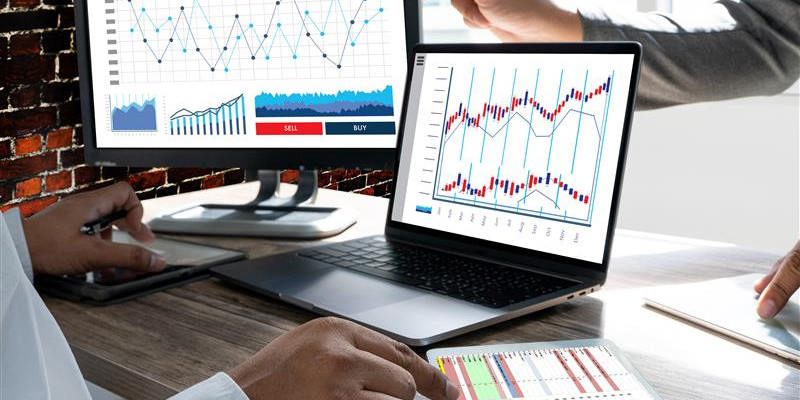Home / Blog / Marketing & branding / Data Driven Marketing & The Importance of Planning in Advance
Data Driven Marketing & The Importance of Planning in Advance
Date posted: 16th September 2022 in Marketing & branding
Last updated: 8th December 2022

Consumer habits are changing, now more than ever. Since the pandemic began, there has been a dramatic increase in online shopping across numerous industries. This has been accompanied by another shift in shopping behavior – customers are now switching where they shop as a result of changing needs and priorities.
When responding to this ever-changing consumer world, it can be difficult to know how to spend your marketing budget. Though your marketing strategy may have run smoothly in the past, planning is always crucial to figure out which tactics will generate the highest returns on investment (ROI). In planning ahead, data can become your most valuable resource.
Knowing how to utilize this data will allow you to see exactly where specific tactics (such as promotional merchandise) have performed well, as well as where they haven’t. In the past, you may never have prioritized using data to determine strategy and you may never have been a strategic planner. Whatever your history, we’re here to get you started!
We’re living in the age of big data. With so many ways of marketing your business, from online adverts to email, analyzing data can really help you to understand customer needs, where promotional merchandise fits in, and whether it generates a high return on investment.
How can data be leveraged?
You may already have in mind a strong idea of your brand’s purpose. You may also have organized events or given out promotional merchandise to spread your brand’s message already. But you may be wondering where to start in terms of measuring your performance for future years? It’s essential to assess how your current marketing strategy performs. Data can be leveraged in several ways to achieve this.
- Brand memorability / recall: This kind of data can be obtained by conducting surveys and interviews which can be handed out via email. This is a great way to determine the success of promotional merchandizing as a marketing technique – which products have left a valuable impression on a customer and why?
- Email engagement: Tracking email open rates and click throughs can flag how effective emails are at actually engaging people. Put simply, if people aren’t opening your emails, especially if you are sending them on a regular basis, they are not engaging with your brand. Using quantitative data like this provides you with a measurable indicator which can be accurately compared to previous performances.
- Social media engagement: You can also track social media engagement. This is an umbrella term which incorporates a wide range of factors including likes, comments, and shares. These are easily measurable, quantitative figures. You can also track words, such as conversations that include key phrases or words. These can be utilized to validate what you suspected you could improve as a business, or can help to refine your existing approach.
- Website traffic: Utilizing website metrics is crucial. Resources like Google Analytics track metrics including the duration of a browsing session, pages visited per session, and ‘bounce rates’ (the number of people who visit your site without interacting). Squarespace is also great for tracking visits to your site, the number of views per page as well as ‘unique visitors’ (the number of visitors during a specific time period). Importantly, website metrics highlight what is working and not working for your website – including the specific pages that need improvement - and who your audience is. It can also help you to identify which platforms are the most effective at driving website traffic, helping you to prioritize those which are falling short.
Whilst we’ve highlighted how you can assess your marketing strategy using data collected on current customer behaviors, it’s important to consider how you can also gather the data to measure ‘customer sentiment’ – defined as the metric which indicates customer emotions, opinions, and feelings towards a business. Customer sentiment gives deeper insight into what customers like and why they like it. Ultimately, having this figured out allows you to make those marketing changes that really count towards improving your brand’s image and returns on investment. It’s a particularly great way of assessing thoughts and feeling towards promotional products.
Customer sentiment can be measured by utilizing…
- Direct customer feedback: Look at how customers are engaging with you and use it – like gathering data on brand recall, this can also be obtained using surveys. To promote customer feedback and show that you value your customers, why not give them an incentive to contribute. A great way of doing this is to offer a free promotional product when they submit one of your surveys or reviews.
- Net Promoter Score (NPS) and overall customer satisfaction: Given how effective word of mouth can be in marketing, calculating the NPS is a valuable way of assessing how likely a customer is to promote your company. If you were to ask how likely a customer is to promote your company on a scale of 1-10, a 9 or 10 would indicate that someone is a promoter of your brand. You can calculate the NPS score by subtracting the number of detractors from the number of promoters and dividing by the total number of customers asked. The calculation, particularly if you ask customers how likely they are to promote your brand based on specific pages / features, you can update your marketing strategy according to any areas of weakness.
- Social media: Whilst social media is great for tracking engagement, you can also study and monitor conversations and comments, with specific attention given to the tone of each. This will give you direct insight into how customer attitudes towards your brand are being shaped. Some really useful sentiment analysis tools for social media include ‘Repustate,’ ‘Critical Mention’ and ‘Lexalytics.’
Promotional items and planning ahead
As discussed in our previous blogs, promotional products are a significant and valuable part of any marketing strategy. Here, we’ve already addressed the importance of utilizing data to drive your marketing strategy, which includes merchandizing. With merchandizing also comes the need to plan. There are some important questions you should ask yourself:
- There may be a several items which cost the same, but which ones are really going to make the most impact? The primary aim of promotional items is for them to generate brand recall and instigate relationship with new customers.
- Merchandise should be suitable for everyday use to get the greatest brand exposure – this is what will make your brand memorable. It’s no wonder that bags, hats, t-shirts, pens, and mugs have become the USA’s top promotional items – each item is practical, with the potential to be used every single day. Here at EverythingBranded, we’ve got you covered with an extensive stock available for all items.
- Who are your target audience? To offer an example, if your brand sells eco-friendly goods, designed to appeal to environmentally conscious individuals, it’s a good idea to choose promo items from our eco-friendly range for example, because it aligns with the ethos of both you and the customer.
What will come of all this research?
Hopefully this has given you an insight into how your marketing strategy can be determined and then altered or tweaked to suit by planning ahead using data. Going forward, you will be able to utilize a strategy which is agile in response to customer feedback and more informed by what customers want, as well as who your target audience should be. Promotional products are a great way to supplement your marketing strategy – but first, consider the data and how it can help you along the way.

Strengthen your brand perception with promotional products
Chat online or call us today on 1800-586-1615
More Articles

Pantone Color of the Year 2025 - How to Incorporate Mocha Into Your Marketing and Merch
4th December 2024 in Marketing & branding

Custom Keychains: A Small but Mighty Promotional Tool in Real Estate
1st January 2024 in Marketing & branding

Get Ready for 2025 – New Year, New Branding
7th October 2024 in Marketing & branding

How Christmas Giveaways can Benefit your Marketing Strategy
22nd December 2022 in Marketing & branding